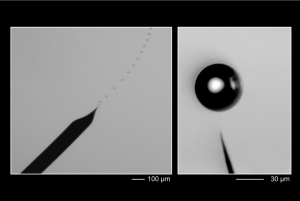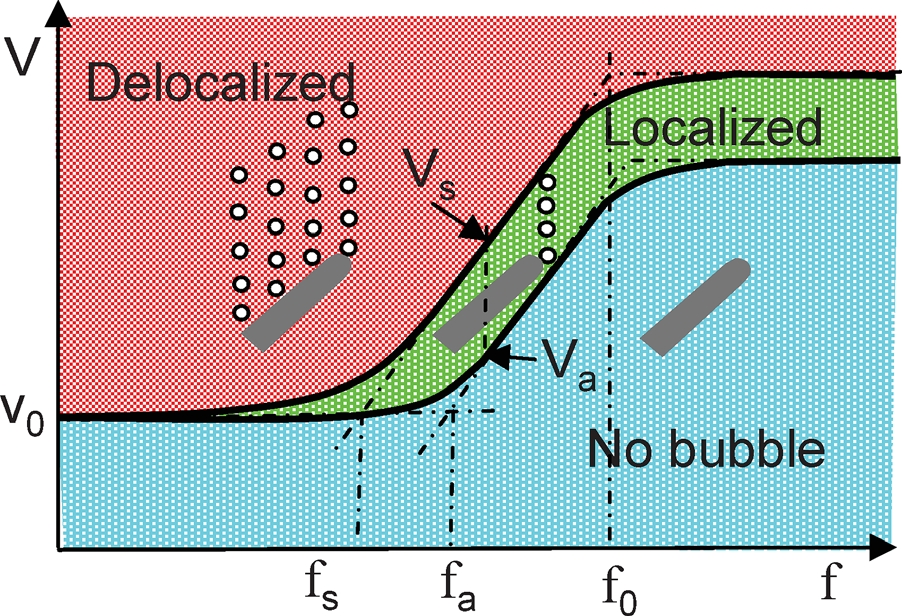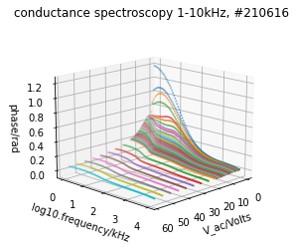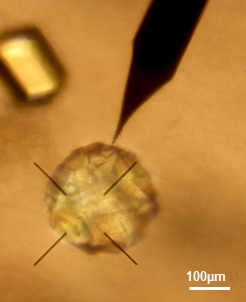Project: From nanoelectrolysis of water to controlled nucleation of bubbles and crystals
The initial objective is the generation of calibrated microbubbles on which new non-linear acoustic methods (LMA, IEMN) were to be tested. In this context, we proposed to generate microbubbles by electrolysis. An experimental bench combining a generation system (manufacture of nanoelectrodes and electronics), electrical measurement and ultra-fast optical microscopy was designed and built. A major result of our study is the identification of the location of microbubble production at the end of the nano electrode (Fig. 1 and video) when the latter is subjected to electrical excitation of frequency and amplitude adapted to its shape and the electrical conductivity of the solution. A theoretical model based on the location of the field at the apex of the nano electrode in a voltage vs. frequency diagram quantitatively explains the phenomenon (Fig. 2). Results show that it is the electrochemical reaction itself that is located at the apex of the tip.
Another surprising phenomenon has been observed: the immobilization of a microbubble at a finite distance from the apex of the nanoelectrode, the microbubble following the possible displacement of the nanoelectrode. A simple model based on “nanoelectrolysis” (i.e., nanolocalization of the production of H2 and O2 molecules at the apex of the nanoelectrode) and an “open bubble” (i.e., exchanging H2 and O2 molecules with the solution) explains most of the observations.
References:
Hammadi, Z.; Grossier, R.; Zhang, S.; Ikni, A.; Candoni, N.; Morin, R.; Veesler, S., Localizing and inducing primary nucleation. Faraday Discuss. 2015, 179, 489-501. SMASH




